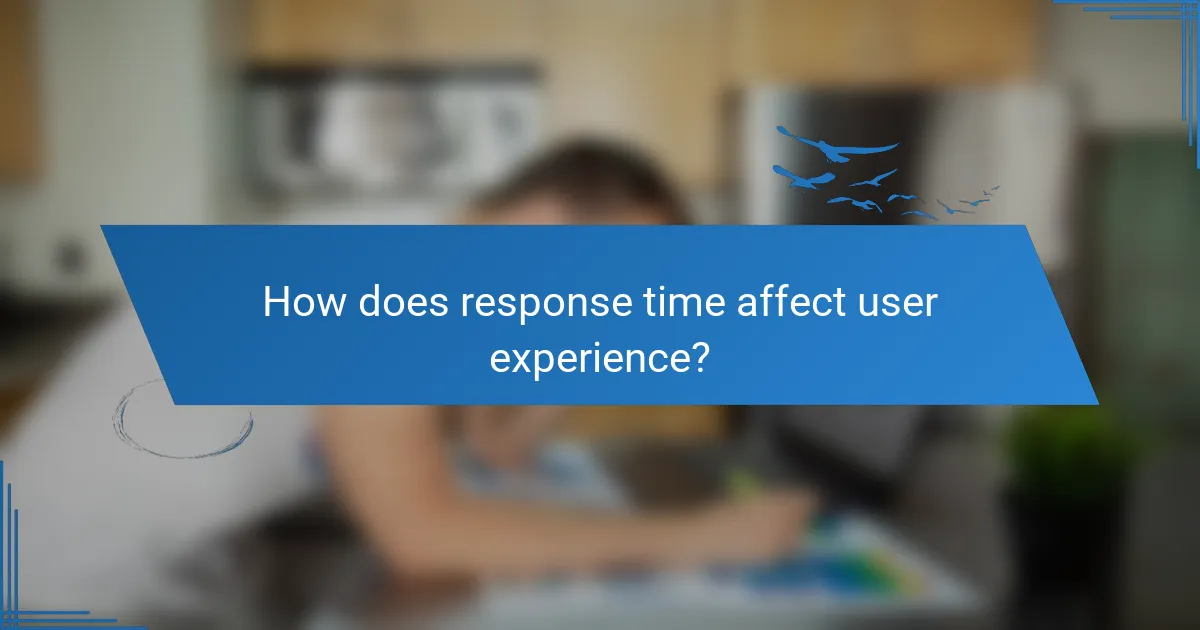Timely help is vital for enhancing user experience, with optimal response times for customer support in the UK ranging from a few minutes to a couple of hours, depending on the communication channel. Fast channels like live chat and social media facilitate real-time interactions, allowing businesses to promptly address customer inquiries. Quick responses not only boost customer satisfaction but also foster loyalty, making it essential for companies to prioritize effective response time strategies.

What are the best response times for customer support in the UK?
The best response times for customer support in the UK typically range from a few minutes to a couple of hours, depending on the communication channel used. Quick responses enhance customer satisfaction and loyalty, making it essential for businesses to establish effective response time goals.
Average response time benchmarks
For general customer support, the average response time benchmarks in the UK suggest that businesses should aim for a response within 30 minutes for live chat and social media inquiries. Email responses should ideally be within 24 hours, while phone support should strive for immediate answers or callbacks within an hour.
These benchmarks can vary based on the type of service offered, but maintaining these standards can significantly improve customer experience. Regularly reviewing and adjusting these response times based on customer feedback can also be beneficial.
Industry-specific response time standards
Different industries have varying expectations for response times. For instance, in the retail sector, customers expect quick replies, often within 1 hour for live chat and social media. In contrast, the financial services industry may have longer acceptable response times, typically around 24 hours for email inquiries.
Understanding these industry-specific standards can help businesses tailor their customer support strategies. Companies should regularly benchmark against competitors to ensure they meet or exceed these expectations, thereby enhancing their reputation and customer trust.

Which channels provide the fastest customer support?
The fastest customer support channels typically include live chat and social media. These platforms enable real-time communication, allowing businesses to address customer inquiries and issues promptly.
Live chat advantages
Live chat offers immediate assistance, often resulting in response times of just a few seconds to a couple of minutes. This channel is particularly effective for handling straightforward questions or troubleshooting issues, as customers can receive instant feedback.
Moreover, live chat allows agents to manage multiple conversations simultaneously, enhancing efficiency. Businesses can also integrate chatbots to handle basic inquiries, further reducing wait times for customers.
Social media responsiveness
Social media platforms, such as Twitter and Facebook, have become popular for customer support due to their accessibility and speed. Companies that actively monitor their social media accounts can respond to customer queries within minutes, fostering a sense of engagement and community.
However, response times can vary significantly based on the platform and the company’s resources. It’s crucial for businesses to establish clear guidelines for social media response times to meet customer expectations effectively.

How does response time affect user experience?
Response time is crucial in shaping user experience, as quicker responses typically lead to higher satisfaction and engagement. Users expect timely assistance, and delays can lead to frustration and abandonment of services.
Impact on customer satisfaction
Fast response times significantly enhance customer satisfaction. When users receive quick answers to their inquiries, they feel valued and understood, which fosters loyalty. For instance, a response time of under five minutes is often seen as ideal in live chat scenarios.
Conversely, delays of more than ten minutes can lead to dissatisfaction, prompting users to seek alternatives. Companies should aim to streamline their response processes to meet or exceed customer expectations consistently.
Correlation with retention rates
There is a strong correlation between response time and customer retention rates. Studies indicate that businesses with prompt response times can retain a higher percentage of their customers compared to those with slower service. Retention rates can improve by up to 20% when response times are reduced to single-digit minutes.
To enhance retention, businesses should implement efficient communication channels and regularly monitor response times. This proactive approach not only retains existing customers but also attracts new ones through positive word-of-mouth and reviews.

What are the key factors influencing response time?
Response time is primarily influenced by staff training and availability, as well as the technology and automation tools in place. These elements determine how quickly and effectively a team can address user inquiries and issues.
Staff training and availability
Well-trained staff are crucial for minimizing response time. When employees understand the products and services thoroughly, they can resolve issues more efficiently, often within single-digit minutes. Regular training sessions and updates on new features or policies help maintain high levels of knowledge and readiness.
Availability is equally important; having enough staff during peak hours ensures that inquiries are handled promptly. Businesses should analyze traffic patterns to schedule adequate personnel, especially during busy periods, to avoid long wait times for users.
Technology and automation tools
Utilizing advanced technology and automation tools can significantly enhance response times. Chatbots, for instance, can handle common queries instantly, allowing human agents to focus on more complex issues. This can reduce overall response time to low tens of seconds for initial interactions.
Additionally, implementing a robust ticketing system can streamline the process of tracking and managing user inquiries. Such systems prioritize requests based on urgency and ensure that no issue is overlooked, leading to a more efficient resolution process.

How can businesses improve their response times?
Businesses can enhance their response times by adopting technology solutions and streamlining internal processes. By leveraging tools like AI chatbots and optimizing workflow, companies can significantly reduce the time it takes to address customer inquiries.
Implementing AI chatbots
AI chatbots can provide immediate responses to customer queries, often in real-time. These systems can handle a variety of tasks, from answering frequently asked questions to guiding users through complex processes.
To effectively implement chatbots, businesses should focus on training them with relevant data and ensuring they can escalate issues to human agents when necessary. A well-designed chatbot can improve response times by up to 50%, especially during peak hours.
Optimizing workflow processes
Streamlining workflow processes is crucial for improving response times. Businesses should analyze their current procedures to identify bottlenecks and inefficiencies that delay responses.
Consider adopting project management tools that facilitate better communication among team members. Regular training sessions can also keep staff updated on best practices, ensuring they can respond quickly and effectively to customer needs.

What metrics should be tracked for customer support?
Key metrics for customer support include first response time and resolution time. Tracking these metrics helps assess the efficiency and effectiveness of support operations, ultimately enhancing user experience.
First response time
First response time measures how quickly a customer receives an initial reply after submitting a support request. This metric is crucial as it sets the tone for the customer’s experience and can significantly impact satisfaction levels.
Generally, a first response time of under 1 hour is considered excellent, while responses within a few hours are acceptable for many industries. To improve this metric, ensure that support teams are adequately staffed and utilize automated responses for common inquiries.
Resolution time
Resolution time indicates how long it takes to fully resolve a customer issue from the moment it is reported. This metric is vital for understanding the efficiency of the support process and the overall effectiveness of the team.
Typical resolution times can vary widely depending on the complexity of the issue, ranging from a few hours for simple queries to several days for more complex problems. To enhance resolution times, prioritize training for support staff and implement a robust knowledge base to streamline information access.

How do subscription models impact customer support?
Subscription models significantly enhance customer support by offering tiered services that cater to different user needs. Premium subscribers often receive faster response times and more personalized assistance compared to standard users, leading to improved overall satisfaction.
Enhanced support for premium members
Premium members typically enjoy prioritized support channels, which can include dedicated phone lines or live chat options. This means they often receive responses within minutes, while standard users might wait longer, sometimes up to several hours. Companies may also offer exclusive resources, such as advanced troubleshooting guides or direct access to senior support staff.
For example, a software subscription service might guarantee a response time of under 30 minutes for premium users, while standard users may face a 2-hour wait. This clear distinction encourages users to opt for higher-tier plans for better service.
Value of personalized service
Personalized service is a hallmark of subscription-based support, where agents are often more familiar with the specific needs and history of premium customers. This familiarity allows for quicker resolutions and tailored solutions, enhancing the user experience. For instance, an agent might reference past interactions or preferences, streamlining the support process.
Moreover, personalized service can lead to higher customer retention rates. Businesses that invest in understanding their premium users’ unique challenges can foster loyalty, as customers feel valued and understood. Implementing feedback loops to gather insights from these interactions can further refine the support experience.

What are the emerging trends in customer support channels?
Emerging trends in customer support channels focus on enhancing user experience through faster and more convenient communication methods. Companies are increasingly adopting various platforms to meet customer expectations for timely assistance.
Increased use of messaging apps
The rise of messaging apps is transforming customer support by providing instant communication options. Platforms like WhatsApp, Facebook Messenger, and WeChat allow businesses to engage with customers in real-time, leading to quicker resolutions.
Messaging apps offer several advantages, including higher engagement rates and the ability to share multimedia content. Customers often prefer these channels for their convenience and familiarity, making it essential for businesses to integrate them into their support strategies.
To effectively utilize messaging apps, companies should ensure prompt responses and maintain a consistent brand voice. Setting clear expectations for response times can enhance user satisfaction and build trust with customers.
